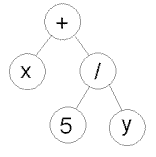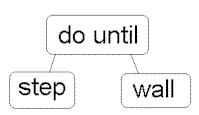X. Encoding
Introduction
In this chapter will be introduced some encodings, which have been already
used with some success.
Binary Encoding
Binary encoding is the most common, mainly because first works about GA used this type of encoding.
In binary encoding every chromosome is a string of bits, 0 or 1.
| Chromosome A | 101100101100101011100101 |
| Chromosome B | 111111100000110000011111 |
Example of chromosomes with binary encoding
Binary encoding gives many possible chromosomes even with a small number of alleles. On the other hand, this encoding is often not natural for many problems and sometimes corrections must be made after crossover and/or mutation.
Example of Problem: Knapsack problem
The problem: There are things with given value and size. The knapsack has given capacity. Select things to maximize the value of things in knapsack, but do not extend knapsack capacity.
Encoding: Each bit says, if the corresponding thing is in knapsack.

Permutation Encoding
Permutation encoding can be used in ordering problems, such as travelling salesman problem or task ordering problem.
In permutation encoding, every chromosome is a string of numbers, which represents number in a sequence.
| Chromosome A | 1 5 3 2 6 4 7 9 8 |
| Chromosome B | 8 5 6 7 2 3 1 4 9 |
Example of chromosomes with permutation encoding
Permutation encoding is only useful for ordering problems. Even for this problems for some types of crossover and mutation corrections must be made to leave the chromosome consistent (i.e. have real sequence in it).
Example of Problem: Travelling salesman problem (TSP)
The problem: There are cities and given distances between them.Travelling salesman has to visit all of them, but he does not to travel very much. Find a sequence of cities to minimize travelled distance.
Encoding: Chromosome says order of cities, in which salesman will visit them.

Value Encoding
Direct value encoding can be used in problems, where some complicated value, such as real numbers, are used. Use of binary encoding for this type of problems would be very difficult.
In value encoding, every chromosome is a string of some values. Values can be anything connected to problem, form numbers, real numbers or chars to some complicated objects.
| Chromosome A | 1.2324 5.3243 0.4556 2.3293 2.4545 |
| Chromosome B | ABDJEIFJDHDIERJFDLDFLFEGT |
| Chromosome C | (back), (back), (right), (forward), (left) |
Example of chromosomes with value encoding
Value encoding is very good for some special problems. On the other hand, for this encoding is often necessary to develop some new crossover and mutation specific for the problem.
Example of Problem: Finding weights for neural network
The problem: There is some neural network with given architecture. Find weights for inputs of neurons to train the network for wanted output.
Encoding: Real values in chromosomes represent corresponding weights for inputs.

Tree Encoding
Tree encoding is used mainly for evolving programs or expressions, for genetic programming.
In tree encoding every chromosome is a tree of some objects, such as functions or commands in programming language.
Chromosome A |
Chromosome B |
 |
 |
( + x ( / 5 y ) ) |
( do_until step wall ) |
Example of chromosomes with tree encoding
Tree encoding is good for evolving programs. Programing language LISP is often used to this, because programs in it are represented in this form and can be easily parsed as a tree, so the crossover and mutation can be done relatively easily.
Example of Problem: Finding a function from given values
The problem: Some input and output values are given. Task is to find a function, which will give the best (closest to wanted) output to all inputs.
Encoding: Chromosome are functions represented in a tree.

(c) Marek Obitko, 1998 - Terms of use
